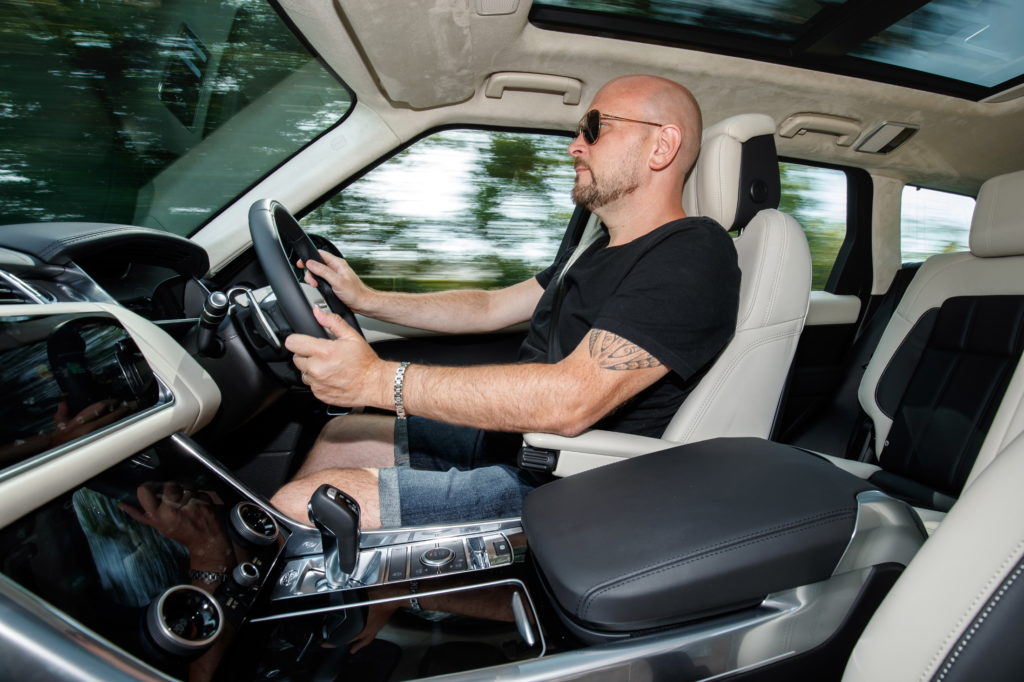New Range Rover Sport PHEV 2018 Review
The plug-in hybrid electric vehicle (PHEV) seems to be all the rage, so to make sure it’s not missing out on this shift towards ‘greener’ motoring, Land Rover has got in on the act. It’s had to really, as the brand is revered by many and, as a result, it is perhaps expected to lead by example.
Badge
As well as the launch of Range Rover model plug-ins, the British marque has ushered in the 2018 Range Rover Sport PHEV. Like its larger sibling, the Sport has a P400e badge stuck on it. The letters and numbers represent the blend of electric and petrol propulsion, and the clout on offer, which is just over 400 PS.
Power and Efficiency
Power is produced from a 300 PS 2.0-litre four-cylinder powerplant and an electric motor producing 85kW. The electric shot in the arm means the Range Rover Sport PHEV is capable of a claimed 101mpg. But even more significant is the CO2 figure of 64g/km and the savings that brings for company car users.
Drivability and Chargability
Behind the wheel, the Sport is sprightly and hushed around town on pure electric power. You can squeeze up to 31 miles out of the SUV before the electric charge runs out. But it only takes 2 hours 45 minutes to refill the battery cells with a fast charger. If you haven’t got access to one of those, then it takes almost a day’s work in the office (seven and a half hours) to replenish with a 10-amp standard charger. Still, that’s okay if you don’t live far from work, and you’re determined to drive in electric-only mode. Plug in at 9 am, and by 4.30pm your car will be ready to rock again.
Comfort and Ability
Alas, the added bulk of the plug-in unit means the combustion engine needs to work hard – and it’s not the most polished powerplant. Therefore, when you put the pedal to the metal, the cry of the engine seems out of place with the opulent environment of the vehicle. Mind you, considering the Range Rover P400e Sport is a big SUV, it still manages to offer a decent mix of dexterity and ride comfort. The six-speed auto ‘box is slick, and the 4×4 system makes light work of non-blacktopped terrain.
Looks and Tech
Looks-wise, the 2018 model year Sport is softer on the outside, and Land Rover has given it some fetching LED headlights. Inside, the car is roomy and attractive with a new, intuitive, double-screen infotainment system. What’s more, if you like playing with gadgets, you’ll spend ages waving your hand backwards and forwards to operate the panoramic roof’s sunblind automatically.
Verdict
You may be better off leasing a Range Rover Sport because, compared with the rest of the line-up, the 2018 Range Rover Sport PHEV costs more than a diesel-powered 3.0-litre V6. That’s fine if you use the electric mode around town a lot, and if you want to save tax. However, if you munch motorway miles regularly, then you may still be better off leasing or buying the oil-burner. A site like CarLeaseComparison will help you find and compare the best prices.
Pros ‘n’ Cons
- Attractive √
- Comfortable √
- Efficient √
- Quick √
- Pricey X
Fast Facts (Range Rover Sport 2.0L Si4 PHEV Autobiography Dynamic – as tested
- Max speed: 137 mph
- 0-60 mph: 6.3 secs
- Combined mpg: 101
- Engine layout: 85kW electric motor + 2.0-litre petrol
- power (PS): 404
- CO2: 64 g/km
- Price: £84,400
-
Categories
- Abarth
- Alfa Romeo
- Aston Martin
- Audi
- Bentley
- BMW
- Caterham
- Chevrolet
- Chrysler
- Citroen
- Dacia
- DS
- Ferrari
- Fiat
- Ford
- Great Wall
- Honda
- Hyundai
- Infiniti
- Isuzu
- Jaguar
- Jeep
- Kia
- Land Rover
- Lexus
- Lotus
- Maserati
- Mazda
- McLaren
- Mercedes
- MG
- Mini
- Miscellaneous Articles
- Mitsubishi
- Morgan
- Motability
- Nissan
- Peugeot
- Porsche
- Renault
- Rolls-Royce
- Saab
- Seat
- Skoda
- Subaru
- Suzuki
- Tesla
- Toyota
- Vauxhall
- Volvo
- VW
- Zenos
-
Articles
- July 2024
- March 2024
- January 2024
- December 2023
- September 2023
- August 2023
- May 2023
- January 2023
- October 2022
- July 2022
- May 2022
- April 2022
- February 2022
- December 2021
- November 2021
- October 2021
- September 2021
- August 2021
- July 2021
- June 2021
- May 2021
- April 2021
- March 2021
- February 2021
- January 2021
- December 2020
- November 2020
- October 2020
- September 2020
- August 2020
- July 2020
- June 2020
- May 2020
- April 2020
- March 2020
- February 2020
- October 2019
- September 2019
- August 2019
- July 2019
- June 2019
- April 2019
- March 2019
- February 2019
- January 2019
- October 2018
- August 2018
- July 2018
- June 2018
- April 2018
- March 2018
- December 2017
- August 2017
- July 2017
- June 2017
- May 2017
- March 2017
- February 2017
- January 2017
- December 2016
- November 2016
- October 2016
- September 2016
- August 2016
- July 2016
- May 2016
- April 2016
- March 2016
- February 2016
- January 2016
- December 2015
- November 2015
- October 2015
- September 2015
- August 2015
- July 2015
- June 2015
- May 2015
- April 2015
- March 2015
- February 2015
- January 2015
- December 2014
- November 2014
- October 2014
- September 2014
- August 2014
- July 2014
- June 2014
- May 2014
- April 2014
- February 2014
- January 2014
- December 2013
- November 2013
- October 2013
- September 2013
- August 2013
- July 2013
- June 2013
- May 2013
- April 2013
- March 2013
- February 2013
- January 2013
- December 2012
- November 2012
- October 2012
- September 2012
- August 2012
- July 2012
- June 2012
- May 2012
- April 2012
- March 2012
- February 2012
- January 2012
- December 2011
- November 2011
- October 2011
- September 2011
- August 2011
-
Calendar
August 2018 M T W T F S S 1 2 3 4 5 6 7 8 9 10 11 12 13 14 15 16 17 18 19 20 21 22 23 24 25 26 27 28 29 30 31 -
Meta






